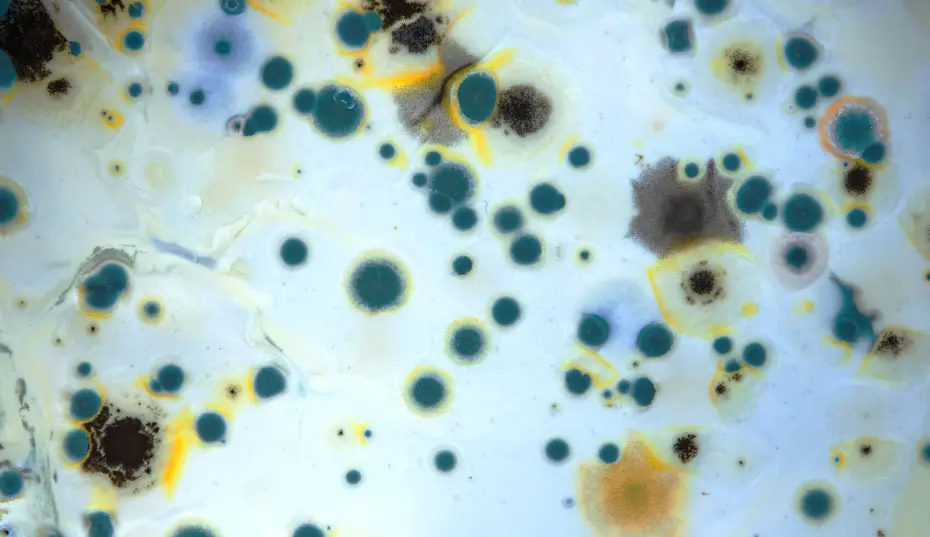Mold can silently infiltrate homes, often hidden in areas where it is not easily detected. Residents of Orange County, especially in cities like Lake Forest and San Clemente, may be unaware of the potential health risks associated with this growth. Mold sickness symptoms can range from minor allergic reactions to severe respiratory issues, making it crucial for homeowners to recognize the signs and understand the link to hidden mold.
Common symptoms include persistent cough, sneezing, fatigue, and even more serious conditions like asthma attacks in vulnerable individuals. Properties in humid areas, such as Mission Viejo and Laguna Beach, are particularly susceptible to mold growth, which can thrive in damp conditions or behind walls and under carpets. Mold inspection becomes essential for those experiencing unexplained health issues, as early detection can significantly mitigate health risks.
For residents in regions like Rancho Santa Margarita and Coto de Caza, being proactive about mold inspections can make a significant difference. Understanding the correlation between mold exposure and health is key to maintaining a safe living environment. Consulting with professionals, such as Mastertech Environmental, can provide clarity and solutions for managing and preventing mold-related problems in Orange County homes.
Understanding Mold Sickness Symptoms
Mold sickness can manifest through a variety of symptoms that affect different body systems. Recognizing these symptoms is crucial for identifying potential mold exposure in homes, particularly in areas like Orange County. Common presentations include allergy responses, respiratory problems, chronic fatigue, and neurological effects, which can significantly impact daily life.
Common Signs of Mold Illness
Individuals exposed to mold often report a series of symptoms that are easily mistaken for other illnesses. Common signs include persistent nasal congestion, sneezing, and itchy eyes. These allergy symptoms arise from the body's immune reaction to mold spores or mycotoxins.
Chronic cough, throat irritation, and postnasal drip frequently accompany these reactions. Additionally, some individuals might experience skin issues, such as rashes or hives. Recognizing these symptoms early can prompt individuals to seek mold inspection, which can confirm the presence of mold and the necessity for remediation.
Respiratory Issues and Allergy Symptoms
Respiratory issues are among the most common effects of mold exposure. The Institute of Medicine directly links indoor mold to upper respiratory tract symptoms.
Coughing and wheezing can worsen in damp environments where mold thrives. Asthma exacerbations and other breathing difficulties arise due to inhalation of mold spores.
Those with existing respiratory conditions may find their symptoms significantly aggravated. This increased respiratory sensitivity can lead to long-term health complications if the exposure continues. Mold-driven allergic reactions may also compound these issues, resulting in a cycle of symptoms that impacts overall well-being.
Chronic Fatigue and Brain Fog
Chronic fatigue is often reported by individuals suffering from mold-related illnesses. This fatigue can feel overwhelming, leading to significant disruptions in daily activities. It often accompanies feelings of exhaustion that persist even after adequate rest.
Brain fog is another commonly noted symptom. Individuals may experience difficulties with concentration or memory recall. Neuroinflammation caused by mold toxins can exacerbate these cognitive challenges, further diminishing quality of life.
These symptoms may also reflect immune suppression, as the body’s response to mold can divert energy from normal functions, leading to overall fatigue.
Neurological and Cognitive Effects
Mold toxicity can lead to significant neurological symptoms, including severe headaches and cognitive impairment. Studies suggest that exposure to mycotoxins can contribute to disorders resembling multiple sclerosis or other neurodegenerative conditions.
Individuals might notice unusual mood swings, increased anxiety, and irritability. Memory problems, such as difficulty finding words or processing information, often arise from mold exposure.
These cognitive effects suggest a deeper interaction between mold and brain health. Prompt identification and remediation of mold sources in living environments can be crucial for preventing these serious neurological impacts.
How Hidden Mold Develops in Orange County Homes
Hidden mold can proliferate in Orange County homes due to specific environmental conditions and common sources of moisture. Understanding how these factors contribute to mold growth helps homeowners take appropriate measures to protect their health and property.
Humidity and Moisture Problems
In Orange County, the coastal climate often leads to elevated humidity levels, creating an ideal environment for mold growth. When indoor humidity consistently exceeds 60%, particularly in bathrooms, kitchens, and basements, the likelihood of mold development increases significantly.
Leaking pipes, poorly ventilated spaces, and condensation from air conditioning units can introduce excessive moisture. Mold spores thrive in damp environments, rapidly colonizing surfaces like walls, ceilings, and hidden areas behind fixtures. Regularly monitoring indoor humidity and utilizing dehumidifiers can help mitigate these risks.
Typical Sources of Hidden Mold Growth
Hidden mold typically arises from various common sources. Water damage remains a primary factor, whether from flooding, burst pipes, or roof leaks. Homes with aging infrastructure are particularly vulnerable, as older materials may allow water intrusion more easily.
Another critical source includes condensation, which forms when warm air meets cold surfaces. This phenomenon often occurs in attics, crawl spaces, and around windows during temperature fluctuations. Homeowners should routinely check for signs of moisture accumulation around appliances and plumbing, as these areas can harbor mold that may go unnoticed until symptoms arise.
Role of Mold Spores and Mycotoxins
Mold spores are present in both indoor and outdoor environments. Even in seemingly clean spaces, spores can settle on damp or humid materials, leading to mold growth. Once established, many types of mold produce mycotoxins—toxic substances that can pose health risks.
These mycotoxins are particularly concerning in homes where residents may have allergies or respiratory issues. Black mold, a notorious type of mold, can release potent mycotoxins that have been linked to serious health problems. To prevent hidden mold, it is vital to address any moisture issues promptly and maintain proper ventilation throughout the home, especially in areas prone to dampness.
The Link Between Mold Sickness and Hidden Mold Exposure
Hidden mold exposure can be a serious health threat, often connecting to various symptoms of mold illness. Identifying and addressing this issue is crucial for affected residents in Orange County.
Why Mold Often Goes Undetected
Mold can grow in various concealed areas, making it challenging to identify. Common hiding spots include behind walls, under floorboards, and within plumbing systems. These areas often have adequate moisture, creating an ideal environment for mold proliferation.
Homeowners might detect a musty smell or notice other environmental changes without finding visible mold. Often, they may overlook small leaks or humidity issues that contribute to mold growth. In Orange County, localized climate conditions, such as humidity and warmth, can exacerbate mold development, increasing the need for vigilance.
How Exposure Leads to Symptoms
Exposure to hidden mold can trigger a range of health issues, collectively known as mold sickness. Symptoms vary based on individual sensitivities and the type of mold, including black mold, which contains toxic mycotoxins.
Common reactions include respiratory problems—such as wheezing and coughing—skin rashes, and fatigue. Individuals with pre-existing conditions like asthma may experience aggravated symptoms. Mold toxicity can also lead to neurological issues, manifesting as memory problems and mood swings.
Addressing mold exposure quickly is essential to prevent long-term health impacts. Awareness of hidden mold sources is vital for residents, especially in regions prone to damp conditions.
Warning Signs and Risk Factors in Orange County Homes
Identifying the signs of mold and understanding the risk factors in Orange County homes is essential for maintaining a healthy living environment. The region's warm climate and humidity levels create ideal conditions for mold growth, making vigilance crucial for homeowners.
Common Signs That Suggest Hidden Mold
Homeowners should be alert to several indicators that may suggest the presence of hidden mold. Visible mold growth can appear as black, green, or orange spots on surfaces. Musty odors often accompany mold infestations, signaling that mold spores are present even if they are not visibly apparent.
Increased humidity levels can lead to condensation on windows and walls, enhancing conditions for mold growth. Water stains on ceilings or walls may indicate moisture intrusion, which can foster mold. Regularly inspecting areas prone to dampness, like basements and bathrooms, can help identify problems early.
Health Clues to Mold Exposure
Exposure to mold can lead to various health issues, particularly respiratory problems. Symptoms may include allergy symptoms such as sneezing, runny nose, and itchy eyes. Individuals may experience more severe respiratory issues, including chronic cough or difficulty breathing.
In some cases, exposure to specific types of mold, such as black mold, can trigger serious health concerns. Those with compromised immune systems, children, and the elderly are at higher risk. Recognizing these health clues can provide homeowners with the urgency to seek professional mold inspection to address potential hazards.
Vulnerable Locations and Structures
Certain areas in Orange County homes are particularly vulnerable to mold growth. Bathrooms and kitchens are commonly humid spaces where mold can thrive if not properly ventilated. HVAC systems can also become breeding grounds for mold spores when they are not maintained adequately.
Homes located in proximity to the ocean face additional challenges due to increased humidity levels. Older buildings with outdated plumbing may have leaks that contribute to mold growth as well. Regular inspections of these vulnerable locations and ensuring proper ventilation can significantly minimize the risk of hidden mold.
Mold Inspection and Detection Services Across Orange County
Mold inspection services are crucial for identifying hidden mold in homes. These services help protect residents' health by detecting mold growth before it becomes a significant issue, especially in the diverse environments of Orange County.
Benefits of Professional Mold Inspections
Professional mold inspections provide invaluable benefits to homeowners. They utilize advanced techniques to identify mold growth that is not visible to the naked eye. Certified inspectors often employ moisture detection tools and air sampling methods to ascertain mold levels accurately.
These inspections also offer peace of mind, as they include thorough visual assessments and detailed reports on findings. Homeowners receive expert recommendations on remediation and prevention strategies, which can save time and costly repairs in the long run. Furthermore, addressing mold early can prevent health issues linked to mold exposure, such as respiratory problems and allergies.
Mastertech Environmental: What Sets Them Apart
Mastertech Environmental stands out in the realm of mold inspection services in Orange County. They focus on comprehensive evaluations using both expertise and state-of-the-art technology. Their certified technicians are trained to identify not only visible mold but also hidden mold spores that may affect indoor air quality.
The company emphasizes customer education, ensuring clients understand the implications of their findings. They provide tailored remediation plans that target the root cause of mold issues. This proactive approach to mold inspection allows homeowners to maintain a safe environment, minimizing the risk of health complications associated with mold.
Service Coverage: Lake Forest, Anaheim, San Clemente and More
Mastertech Environmental extends its services across various areas in Orange County, including Lake Forest, Anaheim, and San Clemente. This broad coverage ensures that residents in these communities have access to reliable mold inspection services.
Customers in Laguna Niguel, Laguna Hills, and Rancho Santa Margarita can also benefit from Mastertech's expertise. Their comprehensive service delivery model accommodates both residential and commercial properties, providing flexibility in meeting diverse customer needs. Quick response times are essential, especially after water damage, making their presence invaluable for local homeowners.
Best Practices for Homeowners
Homeowners can take several proactive steps to prevent mold growth and ensure a healthy living environment. First, they should maintain proper ventilation throughout the home, particularly in areas like bathrooms and kitchens.
Regularly inspecting hidden areas such as basements, attics, and around plumbing fixtures is also critical. Homeowners should immediately address any signs of moisture or water leaks to minimize mold growth potential. Engaging a professional for periodic mold inspections can further enhance safety by detecting issues early on. Adopting these best practices fosters a safer home, aligning with the goal of professional mold detection services.
Mold Remediation and Prevention Strategies
Mold remediation is essential for maintaining a healthy living environment, particularly in areas prone to moisture. Effective strategies focus on thorough removal and ongoing prevention to ensure homes in Orange County remain mold-free.
Mold Remediation Process Explained
The mold remediation process begins with a comprehensive inspection to identify affected areas. Professionals use advanced moisture detection tools to assess contamination levels. This step is crucial for understanding the scope of the problem.
Once the inspection is complete, the area is contained to prevent spores from spreading. This often includes sealing off rooms and using negative air pressure. Next, specialized equipment is employed to remove mold and contaminated materials safely.
After mold removal, affected surfaces undergo cleaning with antimicrobial solutions. Finally, a post-remediation inspection confirms the area is mold-free, addressing any moisture sources to prevent future growth.
Preventing Recurrence: Controlling Humidity
Controlling humidity is vital for preventing mold recurrence. Mold thrives in damp environments, making moisture control a top priority in homes.
Homeowners should maintain indoor humidity levels between 30% and 50%. Utilizing hygrometers can help monitor humidity accurately. When humidity levels exceed this range, condensation may occur, leading to mold growth.
Simple actions can significantly reduce humidity. This includes ensuring proper ventilation in bathrooms and kitchens. Regularly checking for leaks and repairing pipe issues promptly reduces excess moisture. Homeowners in Orange County should also perform routine inspections to catch potential issues early.
Role of Dehumidifiers and Air Quality
Dehumidifiers play a crucial role in maintaining air quality and controlling humidity levels. By removing excess moisture from the air, they can significantly reduce the chances of mold developing.
In areas prone to dampness, such as basements or crawl spaces, dehumidifiers are particularly effective. They should be regularly emptied and maintained for optimal performance.
Additionally, ensuring good air circulation within the home is essential. Using exhaust fans in high-moisture areas can help reduce humidity. Implementing air filters in HVAC systems can also capture mold spores, improving overall air quality in Orange County homes.
Supporting Recovery from Mold Sickness
Addressing mold sickness involves a multi-faceted approach that focuses on detoxification, immune support, and advanced treatment options. Each component plays a pivotal role in facilitating recovery and restoring health.
Detoxification and Binding Mycotoxins
Detoxification is essential for individuals experiencing mold toxicity. Mycotoxins, produced by mold, can lead to various health issues, including brain fog and neuroinflammation. Effective detox methods often include the use of binders like activated charcoal or cholestyramine.
Common detoxification strategies:
- Activated Charcoal: Effective for binding toxins in the gastrointestinal tract.
- Cholestyramine: Binds mycotoxins in the body and aids in their elimination through feces.
Staying hydrated is also crucial to support kidney function and enhance detoxification processes. Regular monitoring by healthcare professionals ensures that detox strategies align with the patient’s unique health status.
Immune System and Inflammation Support
Mold exposure can lead to immune suppression, making individuals more vulnerable to infections and other health complications. Supporting the immune system is critical in recovery from mold sickness.
Key methods for immune support include:
- Probiotics: They help restore gut microbiota and boost overall immune health.
- Anti-inflammatory Diet: Foods rich in antioxidants, such as berries and green leafy vegetables, can reduce inflammation.
Integrating supplements like Vitamin D and curcumin may also provide immune system benefits. Addressing inflammation is vital, as it can exacerbate symptoms and hinder recovery.
Advanced Treatments: Glutathione and LDN
Advanced treatment options like glutathione therapy and Low-Dose Naltrexone (LDN) have shown promise in aiding recovery from mold sickness.
Glutathione:
- Acts as a powerful antioxidant.
- Helps neutralize oxidative stress and supports detoxification.
Low-Dose Naltrexone (LDN):
- Modulates immune responses and may reduce inflammation.
- It's being explored for its potential benefits in addressing neuroinflammation linked to mold exposure.
Both treatments require medical supervision to optimize their effectiveness and minimize any potential side effects. These advanced options can significantly contribute to recovery and improved quality of life.
Frequently Asked Questions
Understanding mold sickness symptoms and hidden mold detection is crucial for homeowners in Orange County. The following sections address common queries regarding mold exposure, detection, inspections, health risks, and remediation options.
What are the common symptoms of mold exposure for residents in Orange County?
Residents in Orange County may experience a range of symptoms due to mold exposure. Common symptoms include persistent nasal congestion, sneezing, coughing, and throat irritation. Individuals with asthma or other respiratory conditions might find their symptoms worsening in mold-infested environments.
How can hidden mold be detected within homes in Laguna Hills and surrounding areas?
Detecting hidden mold requires thorough investigation. Homeowners can look for signs such as damp spots, musty odors, or water damage. Professional mold inspectors often use moisture meters and infrared cameras to identify mold growth hidden behind walls or under flooring.
What are the steps involved in a professional mold inspection in Mission Viejo?
A professional mold inspection typically includes several steps. Inspectors will first conduct a visual assessment of the property to identify any visible mold or moisture issues. They may then take air and surface samples for lab analysis, followed by a detailed report outlining findings and recommendations for remediation.
Are there specific areas in Orange County homes that are more prone to mold growth?
Certain areas within Orange County homes are more susceptible to mold growth. Common hotspots include bathrooms, kitchens, basements, and areas with poor ventilation. Leaky pipes or roofs, as well as high humidity levels, contribute significantly to moisture accumulation in these areas.
What health risks are associated with long-term exposure to mold in indoor environments?
Long-term exposure to mold can lead to serious health complications. Individuals may develop chronic respiratory issues, allergies, and skin irritations. Those with weakened immune systems, such as children and the elderly, are particularly vulnerable to severe health effects.
What remediation options are available for mold infestation in Lake Forest and Anaheim homes?
Homeowners in Lake Forest and Anaheim have several remediation options available. Professional mold remediation includes removing affected materials, cleaning surfaces, and addressing the source of moisture. Options may also involve using antifungal treatments and implementing preventive measures to minimize future mold growth.


